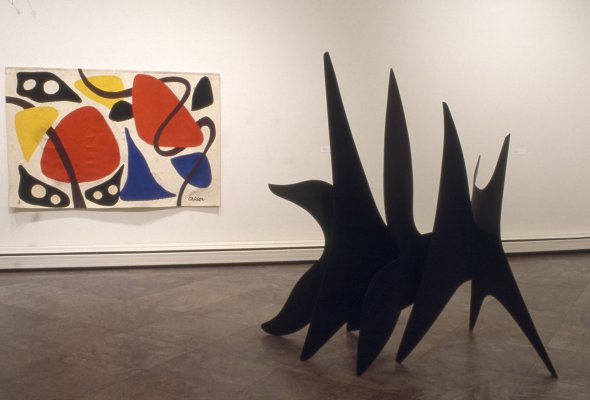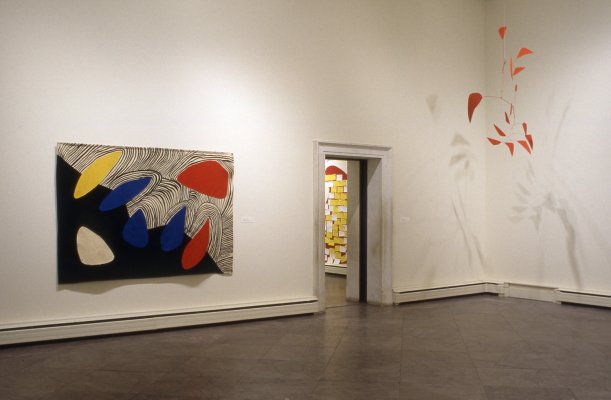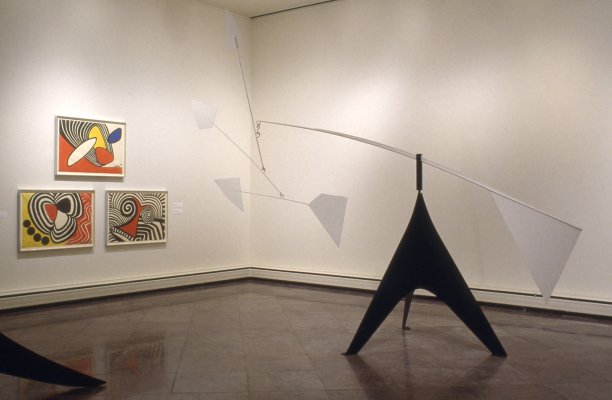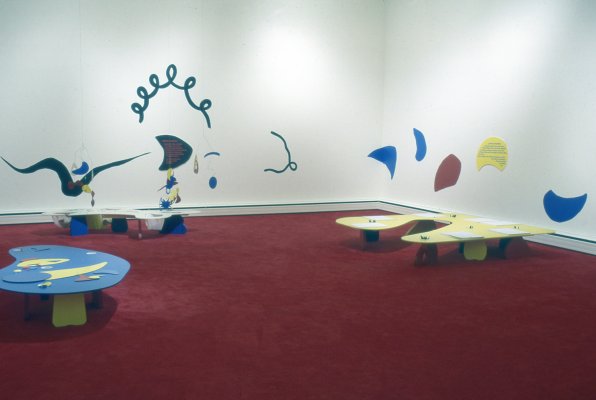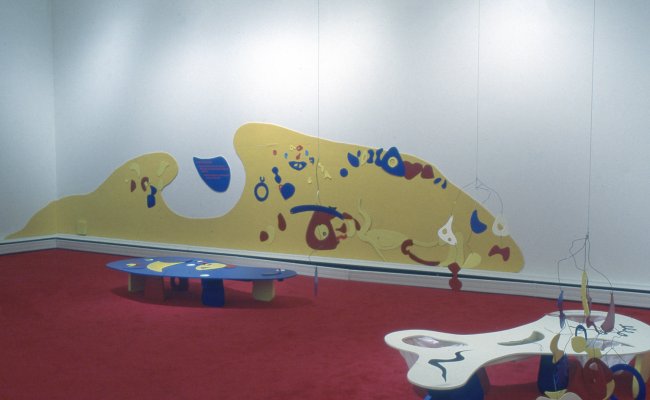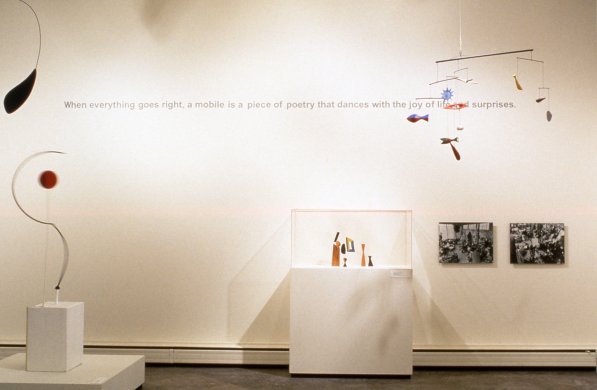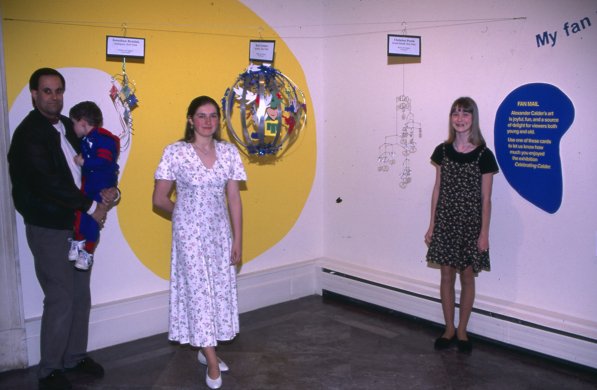Celebrating Calder, organized by the Whitney Museum of American Art and on view at the Albright-Knox from March 9 to May 5, 1996, was a whimsical exhibition featuring more than 50 sculptures, drawings, jewelry, and tapestries by Alexander Calder. It also featured a unique group of rooms designed for children of all ages, allowing space for mobile-making, contour-line drawings, and an opportunity to play with Calderesque shapes.
One of the 20th century’s most celebrated and beloved masters, Calder is best remembered as the inventor of the mobile. After working as a mechanical engineer for several years, he began studying at the Art Students League of New York in 1923. In 1926, he went to Paris where he produced works based on the circus.
After a visit to Piet Mondrian’s studio in the early 1930s, Calder abandoned representational sculpture in favor of abstract, geometric, constructions, which Jean Arp labeled “stabiles.” He gradually began to add movement and these became known as “mobiles,” named by Marcel Duchamp. By the 1950s, Calder began to produce sculpture on a monumental scale, and his outdoor work is certainly among the most brilliant public sculptures of our time. He also produced prolific designs for posters, textiles, jewelry, and tableware.
